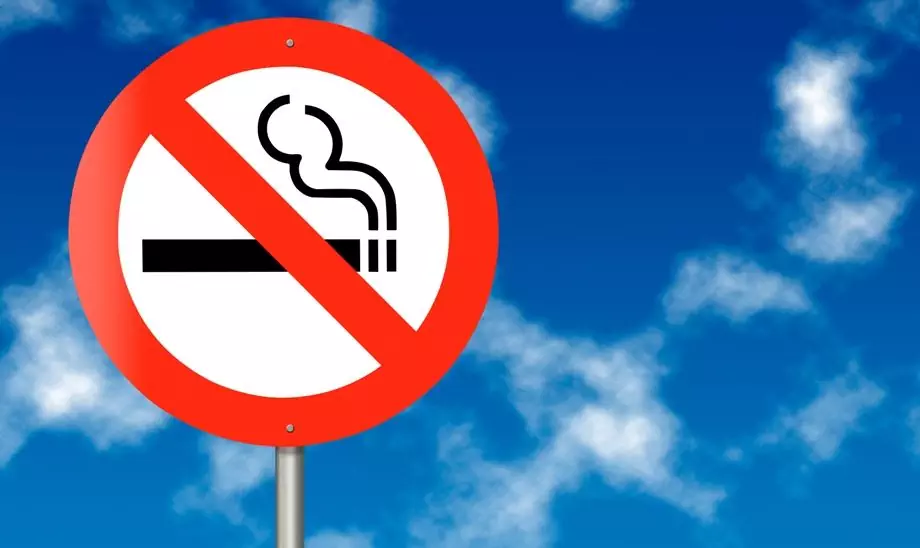- Author Rachel Wainwright [email protected].
- Public 2023-12-15 07:39.
- Last modified 2025-11-02 20:14.
Smoking control
What is smoking as a social phenomenon
Smoking as a process is the inhalation of fumes from preparations, mainly of natural origin, in order to saturate the body with the active substances contained in them. As a rule, these substances belong to the group of psychoactive substances that stimulate the brain centers and alter the mental state of the smoker. Dry mixes are used for smoking. Tobacco smoking is the most widespread in the world. In the minds of a modern person, smoking is directly associated with the use of tobacco.

Smoking is a social problem. Its spread has reached extreme proportions. According to data provided by the World Health Organization, more than 15 billion cigarettes per capita (including non-smokers) are smoked in the world every day. Russia ranks 33rd in the ranking of countries for the number of smokers among the adult population. More than 300 billion cigarettes are smoked by Russian citizens annually. Smoking as a social phenomenon is dangerous because:
- Causes irreparable harm to the health of the smoker;
- Provokes passive smoking of those who are in the area where the cloud of cigarette smoke spreads;
- The toxicity of tobacco smoke is 4 times higher than the toxicity of exhaust gases;
- The composition of tobacco smoke contains many toxic hazardous substances, including carcinogens, which not only kill the smoker's body, but also enter the atmosphere with exhaled smoke.
What is smoking control: basic measures and methods to control smoking
The fight against smoking is a complex of public, administrative, cultural, legal measures aimed at reducing the level of consumption of tobacco products, as well as preventing its further use. The first measures in the fight against smoking were taken long before the problem became worldwide. The first fact of imprisonment for smoking tobacco dates back to the 16th century.
Currently, global smoking control practice uses several methods to prevent the spread of smoking:
- Explanatory. This technique involves explaining the harm of smoking, the consequences of the habit. The main disadvantages of this method of combating smoking are its limited impact on the audience, episodicity, low persuasiveness in comparison with the stereotypical popularization of smoking (cinema, literature);
- Restrictive and prohibitive. This method of fighting smoking is more effective than simple explanation and theoretical communication of facts about the dangers of smoking to the target audience. However, in countries with imperfect legislation (Russia among them), there is a tendency for a low level of compliance with statutory rules and regulations;
- Comprehensive elimination and replacement of the people's need for smoking tobacco products. This approach is distinguished by the complexity of the impact on society: legal and administrative restrictions, cultural, scientific, social impact. The purpose of this technique is to find the reasons in society that induce people to smoke, and to eliminate these reasons. It should be admitted that Russia uses an extremely fragmented set of measures to combat smoking, which explains their low effectiveness.
Smoking in Russia - the magnitude of the problem
Research data on tobacco consumption in Russia showed that people smoke in Russia:
- More than 62% of men;
- About 28% are women.
The total number of smokers exceeds 44 million people, which is more than 40% of the total population of the country. About 1% of the Russian population starts smoking before the age of 15. The data from the same study revealed a fairly high smoking intensity in Russia. Thus, on average, men smoke about 18 cigarettes a day, while the number of cigarettes smoked per day by women reaches 13-15.
About 80% of the Russian population is exposed to secondhand smoke (bars, public places, in their homes). Smoking in Russia is associated with more than 23% of male deaths and about 4% of female deaths.
Fighting smoking in Russia
The main reason for achieving such a scale of the social problem of smoking in Russia is the fragmentation of the measures taken to combat smoking.
Among the main stages in the fight against smoking in Russia are the following:
- Russia's accession to the World Health Organization Framework Convention on Tobacco Control on April 16, 2008;
- Adoption of an order on the prohibition of smoking in the country (Federal Law No. 15-FZ "On protecting the health of citizens from the effects of second hand tobacco smoke and the consequences of tobacco consumption" dated 23.02.2013).
The provisions of the convention regulate and limit international standards in the following areas:
- Second hand smoke;
- Increases in prices and taxes on tobacco products;
- Illegal trade;
- Advertising and other ways to promote tobacco products and stimulate their consumption;
- Labeling of tobacco products;
- Sponsoring social and sports events.
Federal law suggests:
- Restriction of places allowed for smoking. All public organizations and institutions, educational, medical, public places, as well as the territory adjacent to them within a radius of 15m, fall under the ban on smoking in Russia. The smoking ban in Russia also restricts the use of tobacco products on long-distance trains, ships and aircraft, hotels and other residential premises;
- Restrictions on trade in tobacco products;
- Prohibition of any kind of advertising, sponsorship, promotion of the consumption of tobacco products;
- Other measures, including the provision of medical care aimed at quitting smoking and treating nicotine addiction, measures to reduce the demand for tobacco products, informing the population about the dangers of smoking, strict control of the economic sphere in the production, sale, import, and export of tobacco products.
Will a smoking ban order be effective? The federal smoking bans law came into effect on June 1, 2013. Violation of this smoking ban order is subject to penalties:
- Sale of tobacco products to minors - from 8 to 90 thousand rubles;
- Smoking in prohibited places for citizens - up to 50 thousand rubles;
- Advertising of tobacco products - from 2 to 500 thousand rubles.
Found a mistake in the text? Select it and press Ctrl + Enter.






